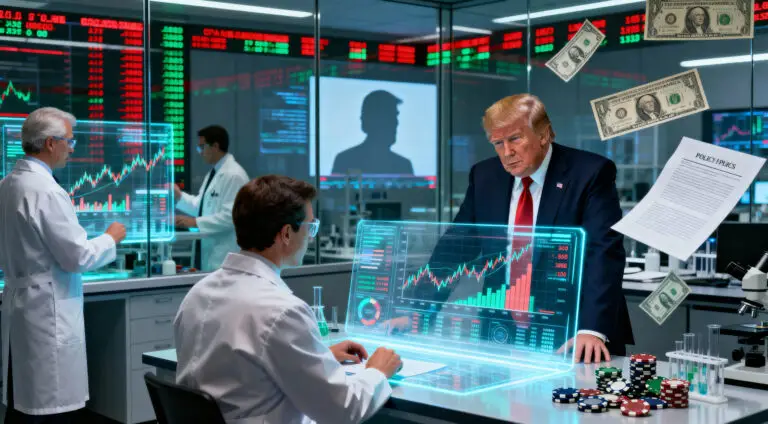Bitcoin’s steadfast performance during the United States and China trade conflict has been extraordinary. While global markets struggled to address the repercussions of the retaliatory tariffs, Bitcoin weathered the storm, leading to further debates regarding its role as a decentralized substitute for conventional currencies.
Gradual and Exponential Increases
On Wednesday, when market volatility gripped every merchant in Bitcoin’s orbit, the currency emerged to defy expectations. After shaking off overnight lows, Bitcoin gained an additional 0.9 percent to $77,725 a coin and for the first time in two weeks, capitalized on the market buying.
Unlike all other assets, it remained unperturbed during the turmoil, showing every sign of strengthening its position in the marketplace. The increasing perception of Bitcoin as an economic safe harbor during periods of uncertainty and crisis has made it a clear outlier in this tumultuous sea of traders.
The Tariff Effect: A Catalyst For Crypto’s Appeal
Business consult blocks have marked the set tariffs in their trade as one clear illustration of how centralized powers can limit innovation and development in crypto. Addressing the Takeaway Conference issues in Paris, Bitcoin Foundation director and Cardano cofounder Charles Hoskinson pointed out that these kinds of creating the economy captures stood as prime examples for the need the world has for some enabling decentralized blockchain-like cryptocurrencies.
“I think actually what’s happening right now is the greatest example of why we need blockchain cryptocurrencies,” said Hoskinson. He stressed the need for a collaborative and decentralized financial structure that removes the need for middlemen.
A Shift in Perception of Trust: Investors Are Searching for Alternatives
For many years, the practical use of cryptocurrencies was hard to recognize for investors, especially when there was an existing financial system in place. However, shifting trade relations have begun to challenge this idea. Bernstein analyst Gautaum Chhugani notes that the “rules-based order” investors were accustomed to and took for granted would no longer be taken for granted.
“Decentralized technologies that can form the alternative ‘trust layer’ could for the first time be considered by the world,” noted Chhugani, signaling a shift in sentiment towards investment embracing decentralized options.
Hedging Currency with Stablecoins: Battling Currency Depreciation
Tether’s stablecoin operator Paolo Ardoino pointed out that stablecoins could become popular in countries hit by economic downturns due to tariffs. He pointed out that Tether’s digital dollar and other stablecoins will become more appealing as national currencies lose value and inflation increases. “Citizens of these countries will want to acquire the dollar and have access to the dollar. Unfortunately our product works best when national currencies are depreciating and there is higher inflation,” Ardoino clarified.
A New Trend in the Market: Adoption of Cryptocurrency
The sustained value of Bitcoin and the increasing demand for stablecoins are indicative of a more profound acceptance of cryptocurrency. In the midst of global trade tensions, decentralized, trustless financial systems offer an attractive alternative.
Future Prospects: The Adaptation of Cryptocurrency in an Evolving World
Bitcoin’s trade war doesn’t merely remain a spectacle between countries; it could spur a dramatic change in how we think about and apply fintech. As the “economic world” undergoes its transformation, Bitcoin and stablecoins are certain to gain importance.















